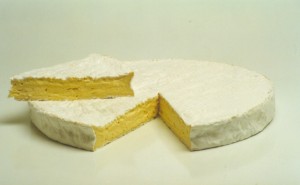
|
|
|||||
One of the most famous cheeses in the world, Brie the "Roi de Fromages" has been a well established cheese for at least 700 years. Of the many types, Brie de Meaux is arguably the finest, and certainly the best known. The Worldwide popularity of Brie de Meaux is possibly down to one man. During the Vienna Congress in 1814, arguments broke out as to which country produced the finest cheese. The Frenchman Talleyrand was in no doubt, and so suggested a competition between the national cheeses of several countries, fully confident of the result. Brie de Meaux was universally acclaimed as the winner, and so the unassuming disc became an overnight success. Brie itself originated, unsurprisingly, in the region of Brie (some 50 Km east of Paris) and is thought to have been made in the 8th century, when the emperor Charlemagne is said to have tasted it. During the French Revolution, Louis XVI is said to have requested a final taste of Brie de Meaux before his arrest. It was once strictly a Parisian cheese, but has now, due to the spread of the railways, become more far more widespread. However, the AOC has restricted its manufacture to certain provinces surrounding Paris, to ensure consistency of quality. This is a raw, soft unpasteurised cow's milk cheese. A massive 23 litres of milk are used to make each cheese. The milk is heated to 37 °C only during the renneting stage, but is never actually cooked. It is then manually cast into its mould with a pelle à Brie, or Brie shovel. The cheese is salted with a dry salt, which is balanced out by a slight sweetness, obtained from the high-quality of milk used. During maturation in a cool cellar, the cheese develops a white mould and the pate, or paste, turns a light straw colour. This process takes a minimum of 4 weeks, during which time the cheese is gently turned several times. Although true for all cheeses, it is particularly important to allow Brie to reach room temperature before consumption to enjoy the full range of flavours. The whole cheese weighs about 3 kilograms, is 35 to 40 cm in diameter and about 3 cm thick. The cheese has a fat content of around 45%. Click here or press your 'Back' button to return |
|
|||||
| All articles © www.teddingtoncheese.co.uk | ||||||
